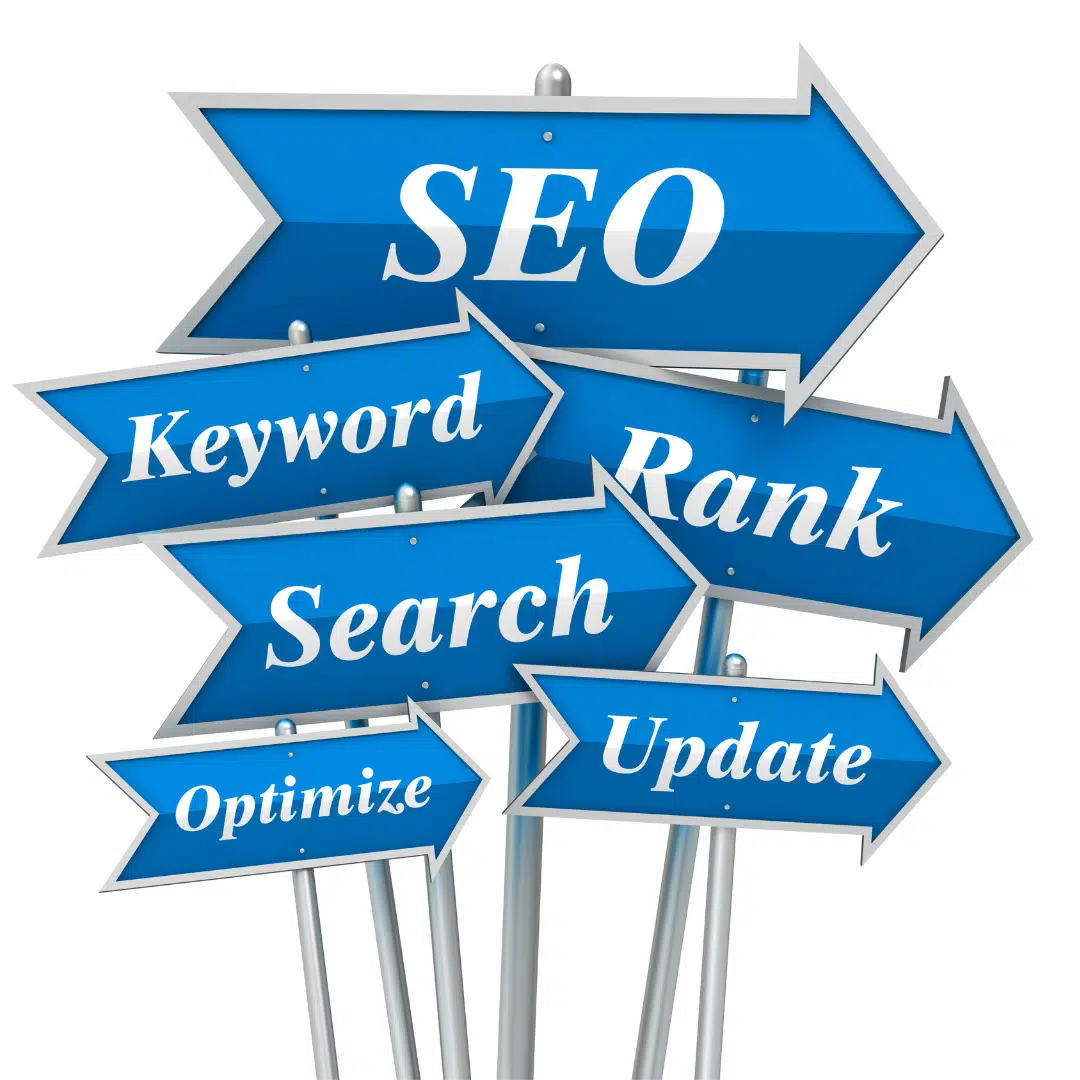

If you’re looking to improve your website’s search engine rankings, you’ll need to develop a solid SEO campaign. But where do you start? This guide outlines the 10 essential steps you need to take to achieve success, from conducting keyword research to building quality backlinks.
Defining your target audience and identifying relevant keywords are pivotal steps in shaping a successful SEO campaign. Let’s dive in to understand more about these critical elements.
Target audience refers to the specific group of people you intend to reach with your content. They’re the ones who will find your content useful, engaging, or entertaining. In essence, your target audience is directly linked to the theme of your website. For example, if you run a fitness business, your target audience would include health enthusiasts, gym-goers, and individuals interested in maintaining a healthy lifestyle. To define your audience, consider factors such as their age, location, interests, challenges, and the kind of content they typically consume.
The next step is keyword identification. Keywords are the search terms people enter into search engines when they’re looking for information. They play a critical role in helping search engines understand the relevance of your content to specific search queries. The right keywords can increase your content’s visibility, hence driving more traffic to your website.
In a successful SEO campaign, keyword research shouldn’t be taken lightly. Use tools like Google Keyword Planner to identify high-volume, low-competition keywords related to your website theme. In our fitness website example, potential keywords could include “best home workout routines,” “healthy meal plans,” or “how to lose weight effectively.”
However, don’t just stuff your website with these keywords; aim to integrate them organically. Google’s algorithm is becoming increasingly sophisticated, and it favours content that reads naturally over content that’s overly optimised.
In conclusion, defining your target audience helps tailor your content to the right readers, while using appropriate keywords aids in enhancing your website’s visibility on search engines. By paying attention to these two aspects, you’re setting your website up for SEO success.
Executing a comprehensive website audit is a critical stage in launching a successful SEO campaign. This process allows you to examine your website holistically and identify areas that require improvements to enhance your visibility in search engine rankings.
A website audit generally begins with a technical SEO check. This encompasses evaluating your site’s crawl-ability and index-ability. Check if search engines can easily navigate and understand your website’s content. Tools like Google Search Console can highlight potential errors, such as crawl errors, duplicate content, or broken links, that might prevent search engines from properly indexing your site.
Next, assess the site’s on-page SEO. This involves examining elements like title tags, meta descriptions, URL structure, header tags, and keyword usage within the content. These elements should be optimised for your targeted keywords and be as descriptive and enticing as possible to attract user clicks from the search results page.
Your website’s user experience (UX) also significantly contributes to SEO success. Evaluate aspects like your site’s loading speed, mobile-friendliness, and navigational structure. Slow loading speed or a website that’s hard to navigate can lead to high bounce rates, adversely impacting your SEO.
An audit isn’t complete without an examination of your site’s content. It should be unique, high-quality, and offer value to your target audience. Besides, it should be structured well with proper use of headings, subheadings, and visual elements for easy readability.
Finally, a website audit should include an off-page SEO analysis. Look at your backlink profile, identify the number and quality of sites linking back to you. High-quality, relevant backlinks can significantly boost your SEO rankings.
In conclusion, conducting a thorough website audit gives you a clear roadmap of what needs to be fixed or enhanced on your website for a successful SEO campaign. It lays the foundation for strategic planning and informed decision-making, steering your site toward improved visibility and increased organic traffic. LeadOn Design provides you with high standard and up-to-date SEO Campaigns approaches to rank your website higher in search engines especially in Google.
Optimising your website structure and navigation is a fundamental aspect of a successful SEO campaign. An intuitively structured and easily navigable website enhances user experience, encourages longer site visits, and helps search engines understand your content better.
The website structure should be designed with a logical hierarchy. Ideally, your site should have a clear, tiered setup, starting with the homepage, followed by category pages, and then individual pages or posts. Each page should be reachable within a few clicks from the homepage. This allows users to easily find what they’re looking for, improving their experience and potentially decreasing bounce rates.
A good structure also aids search engines in crawling your site effectively. Search engines follow links on your site to discover content. The easier and more organised these paths are, the more efficient the crawlers will be in indexing your site.
Your website’s navigation should be equally user-friendly. Clear, well-labeled navigation menus assist visitors in exploring your website and understanding what your content entails. Use straightforward, descriptive labels for your menu items, avoiding industry jargon or ambiguous phrases. Remember, if visitors can’t find what they’re looking for quickly, they’re likely to leave your site.
Optimising website navigation also benefits SEO. Adding a breadcrumb trail, a secondary navigation system that shows a user’s location in a site’s hierarchy, can be particularly beneficial. Breadcrumbs are not only helpful for users but also for search engines, providing additional clues about how your site is structured.
Another way to optimise your website’s structure for SEO is by using internal linking strategically. By linking related pages, you allow search engine spiders to find and index other pages on your site, boosting your overall site’s SEO.
In conclusion, a well-structured, easily navigable website creates a positive user experience and makes your site more accessible to search engines. It’s a fundamental step in optimising your website for SEO, contributing significantly to your campaign’s success. LeadOn Design is dedicated to provide the quality services in SEO Campaigns.
Creating high-quality, optimised content is one of the most crucial elements of a successful SEO campaign. It is key to increasing visibility, engaging your audience, and driving conversions.
High-quality content revolves around providing value to your readers. It should be original, relevant, and engaging, with clear and concise language. This means understanding your audience’s needs and crafting content that addresses those needs. For instance, if you’re a fitness blog, offering well-researched, comprehensive articles about workout routines or nutrition plans can make your content valuable and interesting to fitness enthusiasts.
In terms of SEO optimisation, your content should be strategically designed around relevant keywords. Keyword optimisation involves naturally incorporating search terms into your content that your audience uses to find information. Avoid keyword stuffing, which can negatively impact your SEO performance; instead, ensure keywords flow naturally within your content.
Additionally, structure your content well for readability. Break your content into sections with headers and sub headers, use bulleted or numbered lists where appropriate, and leverage images or infographics to make complex information digestible. Remember, both search engines and readers appreciate well-structured content.
Meta tags, including title tags and meta descriptions, should also be optimised as part of your content strategy. These tags give search engines and readers a brief overview of your content’s subject, so ensure they are concise, descriptive, and include your target keywords.
It’s also crucial to regularly update your content. Search engines favour fresh content, and readers appreciate up-to-date information. Consistently posting new content, as well as updating older posts, can significantly boost your SEO performance.
Lastly, remember to incorporate a robust internal and external linking strategy within your content. This helps search engines understand the context and relationships between different pieces of content.
Creating high-quality, optimised content not only elevates your SEO campaign but also builds credibility with your audience, positioning your brand as a trusted authority in your field.
Building high-quality backlinks is a cornerstone of a successful SEO campaign. Backlinks, also known as inbound links, are links from other websites that lead to your site. They are a significant factor that search engines use to determine your website’s authority and relevance, influencing your site’s ranking in search results.
High-quality backlinks are those from reputable, relevant websites. Links from trusted sites in your industry signal to search engines that your content is reliable and valuable, positively affecting your SEO. On the other hand, links from low-quality or irrelevant sites can harm your rankings.
One effective method for building high-quality backlinks is through guest blogging. By writing a valuable post for another relevant blog in your industry, you can include a link back to your website. This not only introduces your content to a new audience but also earns you a valuable backlink.
Another method is to create high-quality, unique content that others naturally want to link to. This could be comprehensive guides, research reports, infographics, or other forms of “linkable assets.” This strategy is often termed “link earning,” and while it may take more time and effort, the quality and sustainability of backlinks it can generate are worth it.
Skyscraper technique is another effective link-building strategy. It involves finding popular content within your niche, creating something even better, and then reaching out to those who have linked to the original content to link to your improved version instead.
Additionally, consider collaborating with influencers or experts in your industry. Interviews, webinars, or joint research can result in quality backlinks and increased visibility.
Remember, while building backlinks, focus on quality over quantity. Aim for links from reputable websites that are relevant to your industry or niche. By integrating high-quality backlink building into your SEO strategy, you can significantly improve your website’s authority, search engine rankings, and organic traffic. Our Experts in LeadOn Design will consider every single step to optimise your website for better ranking in search engines especially in Google.


